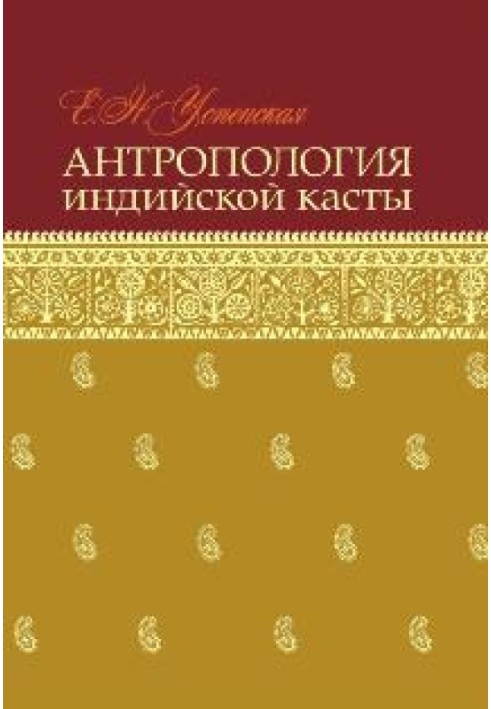Anthropology of Indian caste
 Instant download
Instant download
after payment (24/7)
 Wide range of formats
Wide range of formats
(for all gadgets)
 Full book
Full book
(including for Apple and Android)
The monograph presents an anthropological study of Indian caste society and develops an original concept of the formation, functioning and reproduction of the traditional jati organization. The structuring of society according to the jati type is a civilizational feature of Indian culture, goes back to archaic forms of social development and is elevated by Hinduism to the rank of a law of social life. Brahmanism-Hinduism is considered in this study as a highly effective social technology. Particular attention is paid to discrete subcultures of jati, ethnic caste communities, parity and hierarchical communication patterns, markers of caste status.
CONTENTS: Introduction 3 Historiography and source base for the study 26 Part I FORMATION OF THE CASTE SYSTEM Chapter 1. Philosophy of the caste system 53 Ethnic contacts Indo-Aryans: Varna and Jati 53 Brahmanical natural philosophy of Jati 98 Chapter 2. Sanskritization 129 Sanskritization as Brahmanical acculturation 130 The principle of swadharma 160 The Great and Lesser Tradition of Hinduism 178 Sanskritization of the Dravidian South 197 Part II REPRODUCTION OF CASTE BUILDING Chapter 3. Jati 228Jati versus caste 229The concept of kinship and jati 238Endogamy in caste society 267Exogamy in a caste society 278Biradari, or parity of statuses 304Chapter 4. Caste 326Caste as a status group 326Part III ETHNOGRAPHY OF JATIG Chapter 5. Ethnocaste communities - Sanskritized ethnic groups 353The concept of “ethnocaste community” 354Ethnok passionate communities of arable farmers in the hot zone, varna status of shudra 366Ethnocaste communities of economic-cultural type of nomads and semi-nomadic pastoralists, varna status of kshatriya 381Ethnocaste communities of forest hunters and gatherers of the tropical zone 401Chapter 6. Diversity of the world of jati 413Jajmani caste community 414Caste patterns of communication 432Brahmins 453Jati-“sects” 464Fifth avarnas (“untouchables” ", "scheduled castes") 471Markers of caste status 478The role of women in maintaining caste status 500Conclusion 511Literature 519Index of Indian terms 537Summary 549
Data sheet
- Name of the Author
- Елена Успенская Николаевна
- Language
- Russian













